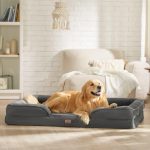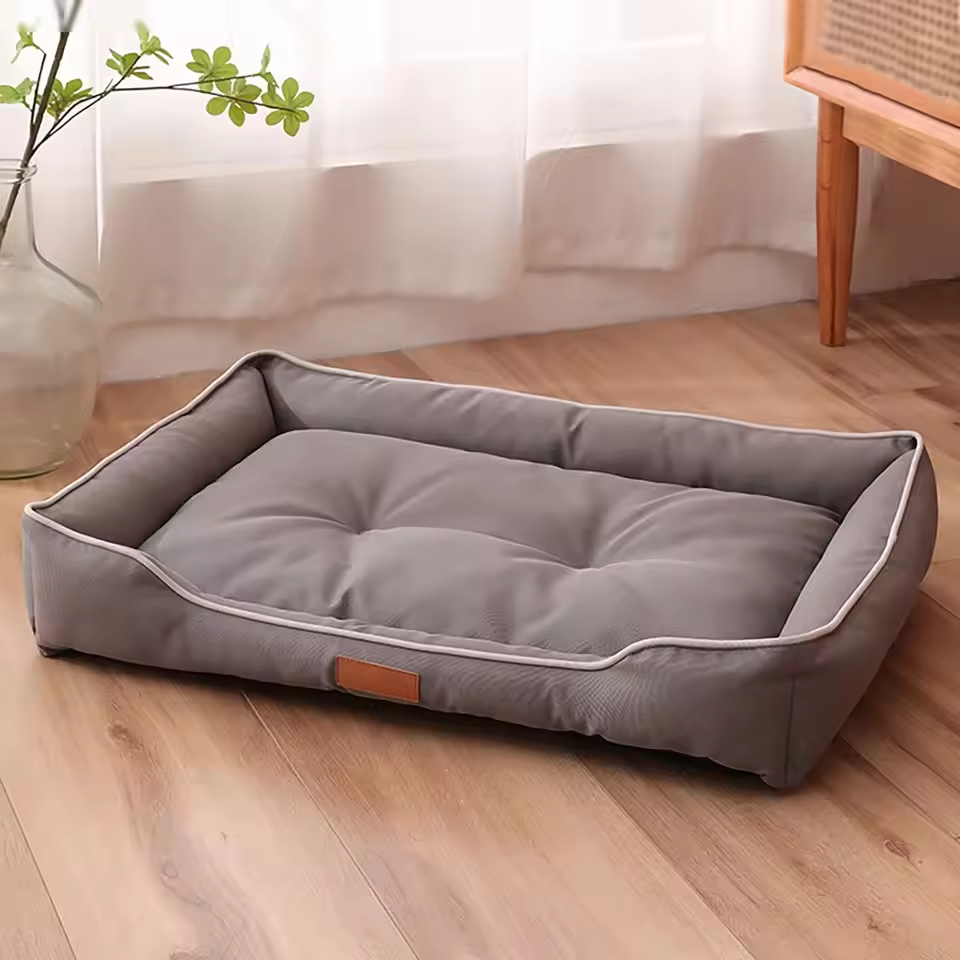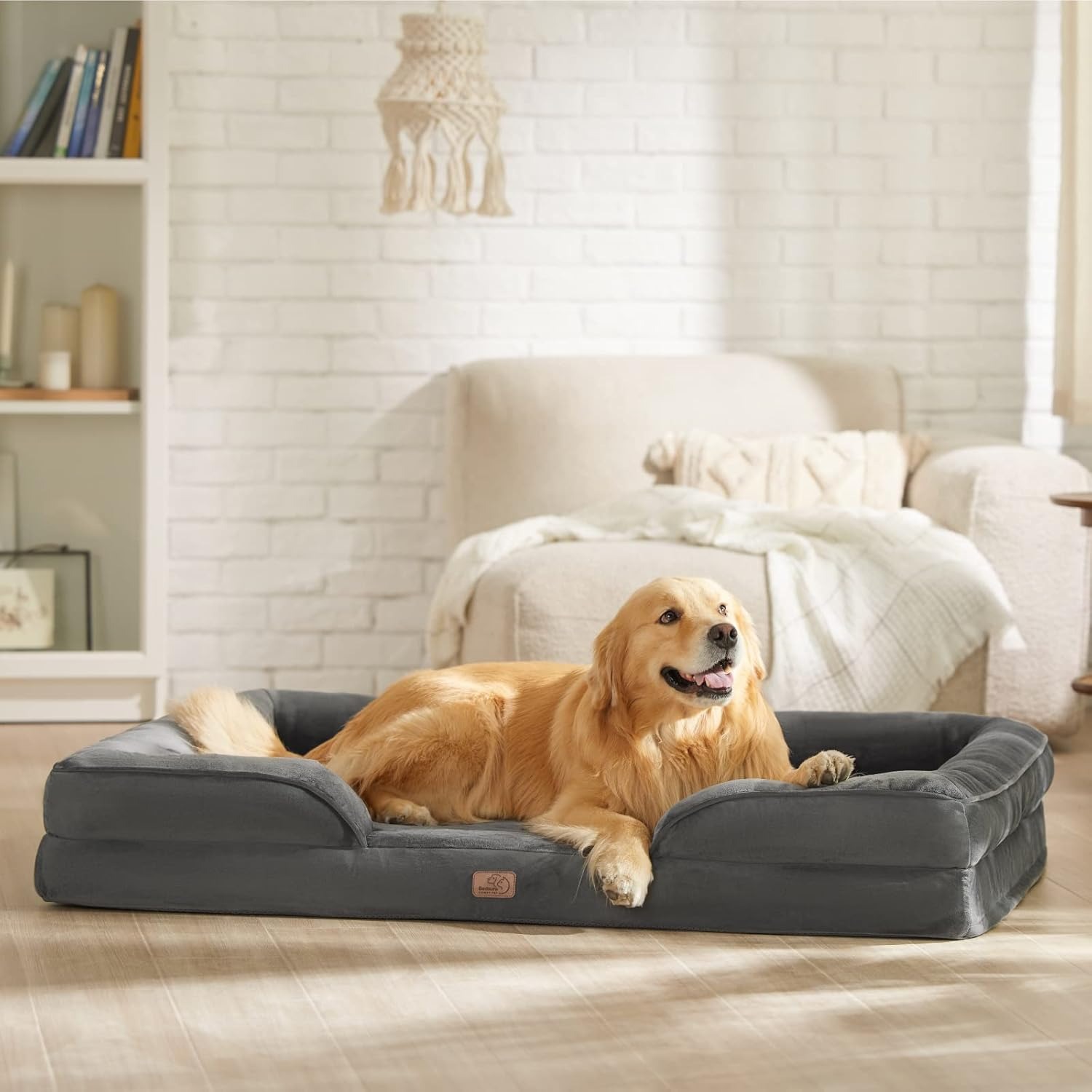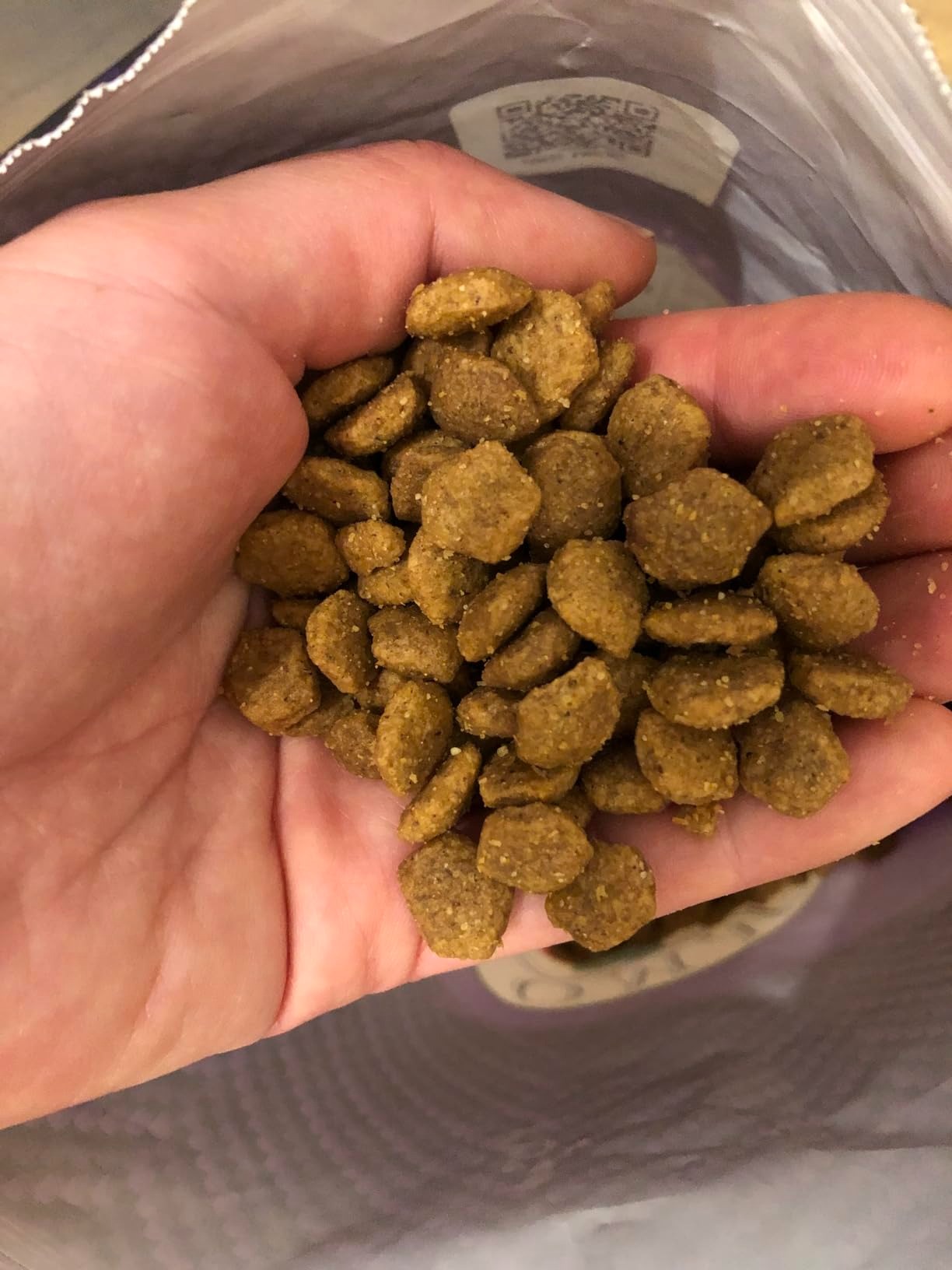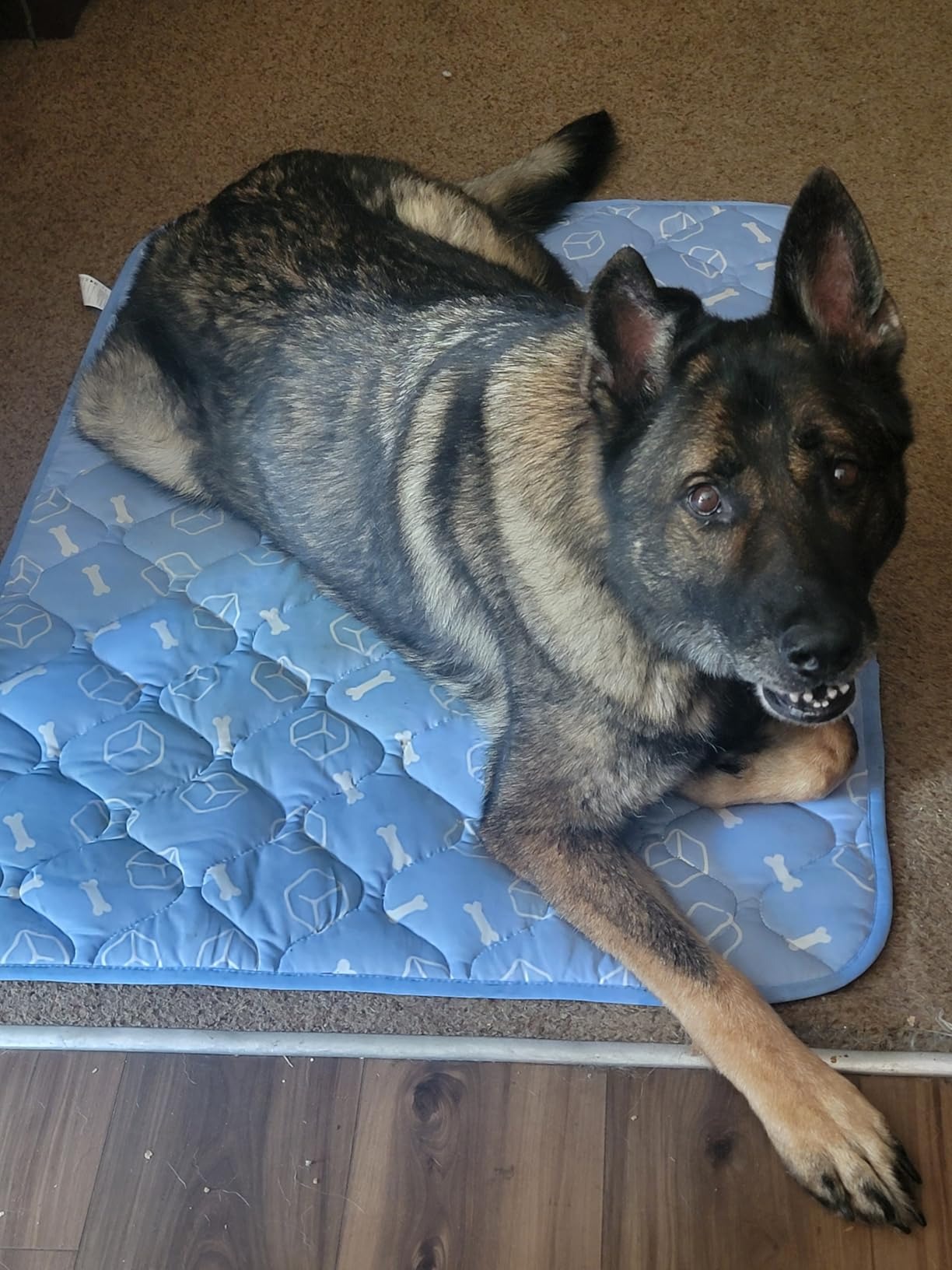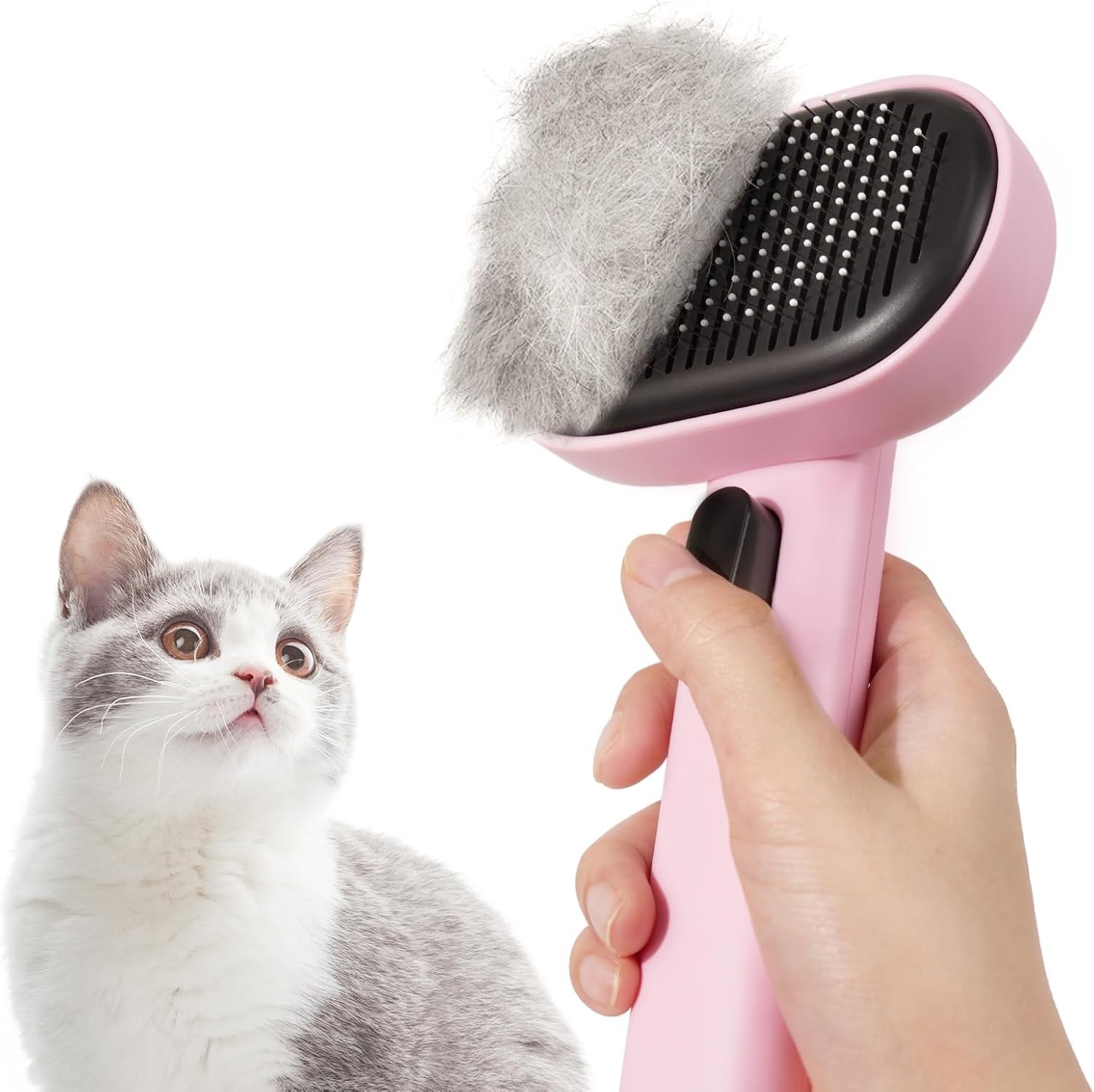Introduction to Orthopedic Dog Beds
Orthopedic dog beds are specialized sleeping surfaces designed to support pets’ joints, muscles, and overall comfort. Unlike standard beds, they use materials like memory foam, gel, or high-density cushioning to contour to a dog’s body, reducing pressure on bones and easing stiffness. Ideal for aging pets, overweight dogs, or those with conditions like arthritis, these beds promote healthier sleep by lifting joints off hard floors and improving circulation.
Key features include adjustable firmness, waterproof covers for easy cleaning, and non-slip bases to prevent sliding. For instance, memory foam molds to a dog’s shape, providing targeted support to hips and spine. Senior dogs or large breeds often show reduced limping and increased mobility after using orthopedic beds consistently.
While they may cost more than traditional beds, their long-term benefits—such as slowing joint degeneration and enhancing rest quality—make them a compassionate investment. Whether your pet has mobility issues or simply needs extra comfort, an orthopedic dog bed is a practical choice for prioritizing their health and well-being.
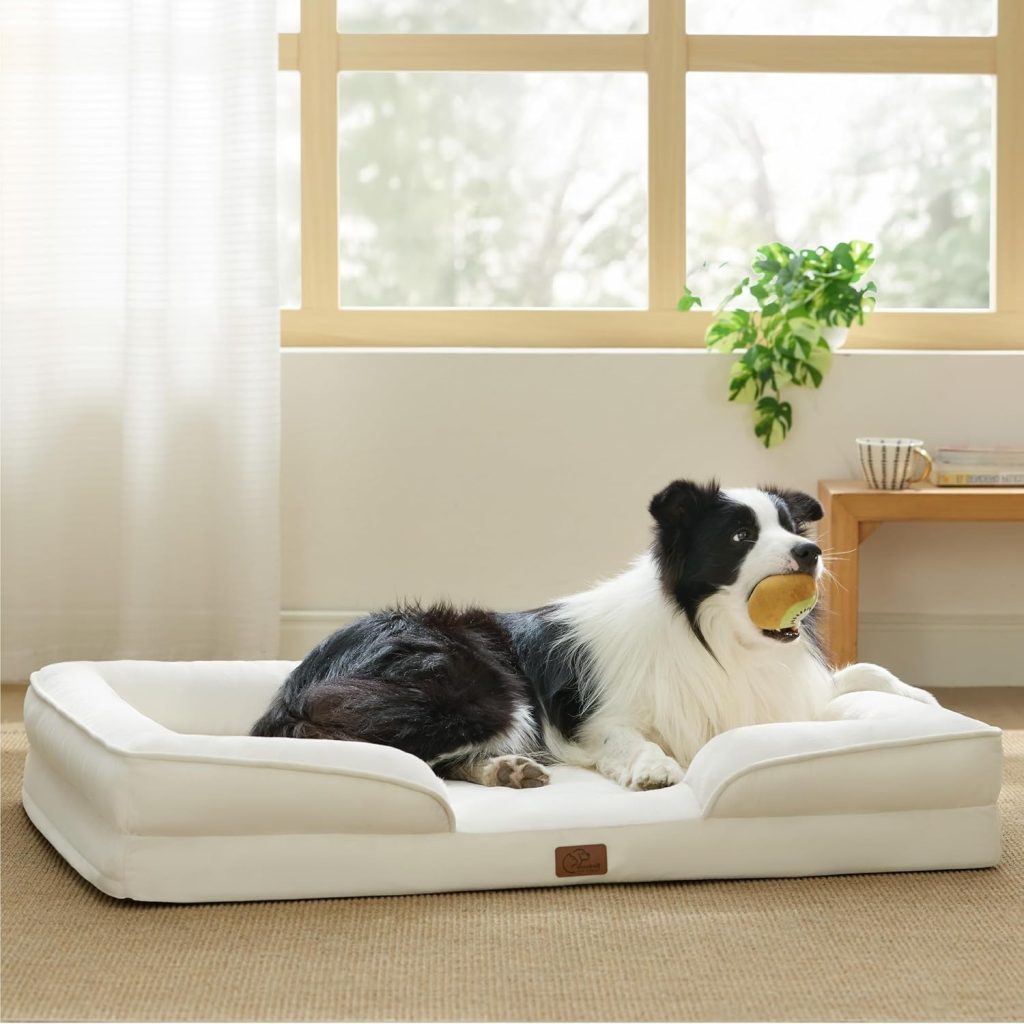
The Science Behind Orthopedic Support for Pets
Orthopedic dog beds leverage materials and design principles to improve pets’ physical health through pressure redistribution and joint alignment. Traditional flat surfaces force joints to bear uneven weight, leading to inflammation or pain. In contrast, orthopedic beds use memory foam or gel-infused layers that conform to a pet’s body shape, spreading weight evenly across muscles and bones.
Memory foam’s viscoelasticity (ability to mold and rebound) creates a custom support system. For example, a dog with hip dysplasia sinks into the foam so its hips rest above the ground, reducing strain. Similarly, gel layers enhance heat dissipation, preventing overheating that could worsen arthritis pain.
Research shows orthopedic beds improve circulation by lifting joints away from hard floors, allowing blood to flow freely to limbs. A study in Veterinary Medicine found dogs using orthopedic beds slept 30% longer and exhibited 40% less stiffness upon waking.
For large breeds or overweight pets, denser foam counteracts gravitational pressure on spinal discs. Raised edges on some beds also aid sitting posture, reducing strain on ligaments. Over time, this support slows joint degeneration and enhances mobility, making orthopedic beds a science-backed solution for pet wellness.
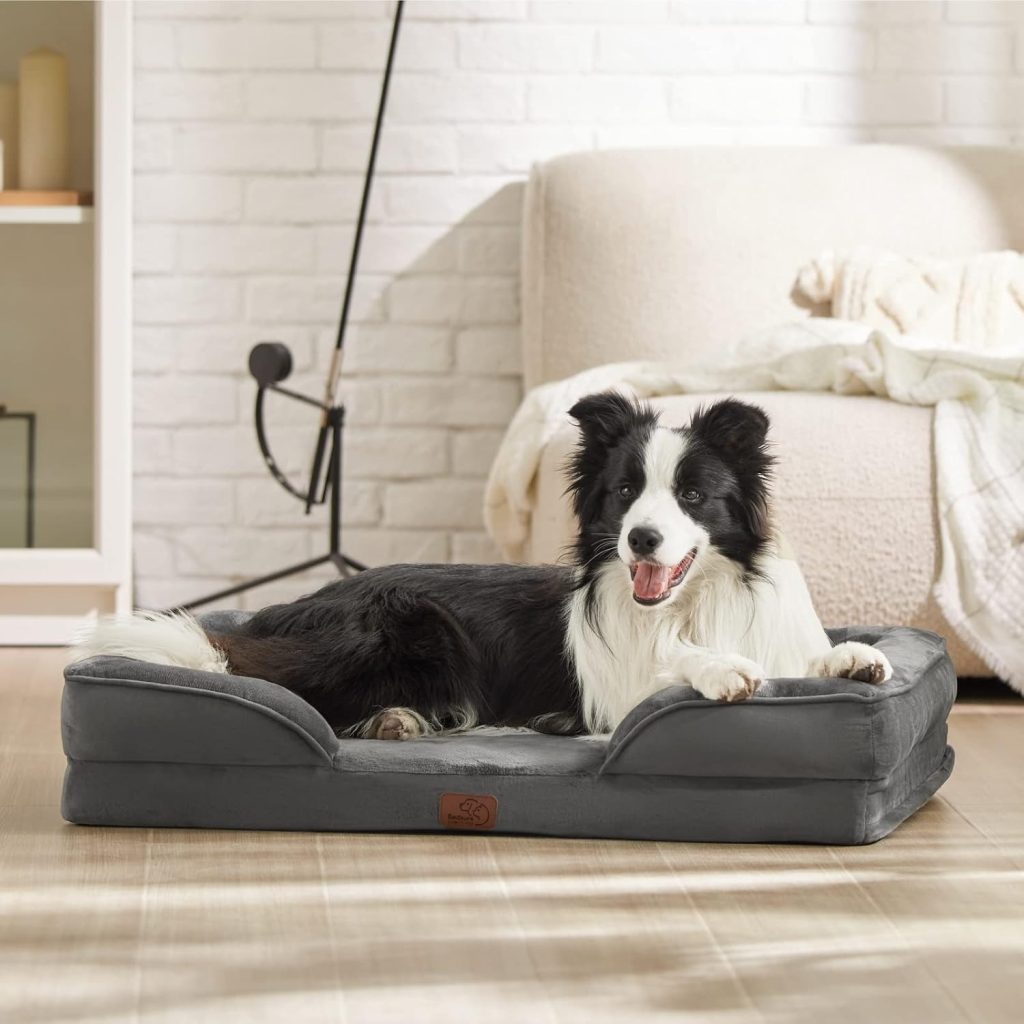
Key Features of High-Quality Orthopedic Dog Beds
- Memory Foam or Gel Core
- Pressure Relief: High-density memory foam molds to a dog’s body, reducing joint strain.
- Support Layers: Dual-layer designs (e.g., foam + gel) enhance cushioning for heavy breeds.
- Adjustable Firmness
- Removable toppers or adjustable straps let users customize support for pets with varying conditions (e.g., arthritis vs. obesity).
- Waterproof Cover
- Easy-to-clean, stain-resistant fabric protects against accidents while maintaining hygiene.
- Non-Slip Base
- Rubberized undersides prevent sliding on hardwood or tile floors, ensuring stability.
- Durable Materials
- Reinforced stitching and heavy-duty zippers withstand chewing or rough play.
- Size-Specific Options
- Beds for small (under 20 lbs) to large breeds (over 100 lbs) ensure proper fit.
- Temperature Regulation
- Cooling gel inserts or breathable fabrics prevent overheating in warm climates.
- Safety Certifications
- Non-toxic materials (e.g., CertiPUR-US certified foam) ensure no harmful emissions for pets.
Examples like MidWest Homes for Pets or BarkBox Orthopedic Beds prioritize these features, offering longevity and health benefits. Without these traits, cheaper beds may flatten quickly or worsen joint issues.
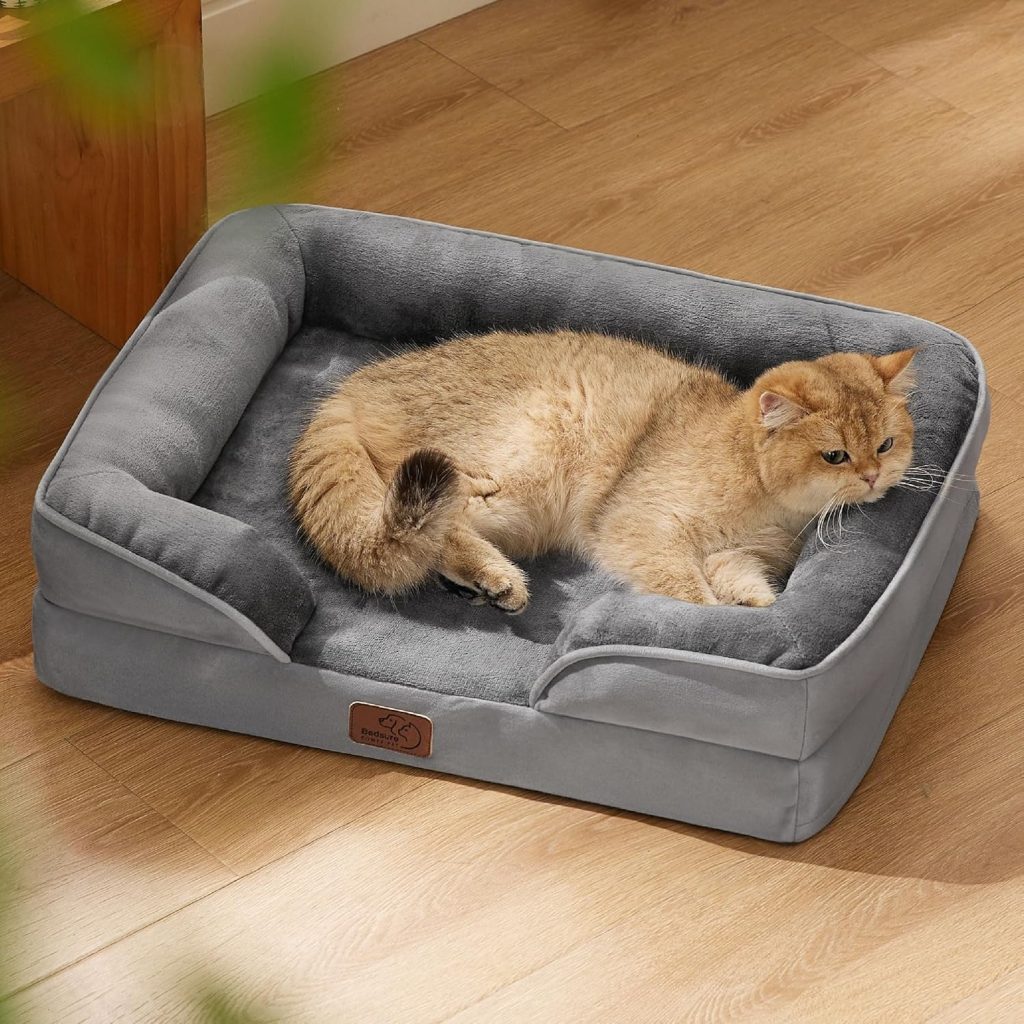
Choosing the Right Bed for Your Dog’s Needs
Selecting the perfect orthopedic dog bed requires considering your pet’s unique traits:
Size & Weight:
- Measure your dog’s length and girth. Opt for beds 15–20% larger than their body to allow stretching.
- Heavy breeds (e.g., Great Danes) need 3-inch+ foam to avoid sinking into the bed.
Health Conditions:
- Arthritis/Back Pain: Memory foam beds with raised edges (e.g., MidWest ComfortRest) ease joint pressure.
- Obesity: Extra-thick beds (4-inch foam) distribute weight evenly to reduce strain.
- Skin Sensitivities: Hypoallergenic covers like Boo & Co.’s organic cotton minimize irritation.
Material Preferences:
- Waterproof Covers: Ideal for puppies who chew or dogs with accidents.
- Adjustable Beds: Removable toppers cater to pets needing firmer or softer support over time.
Budget & Brand:
- Mid-range options like K&H Pet Products balance affordability and quality.
- Premium brands (e.g., Best Friends by Sheri) offer long-lasting designs but cost more.
Environment:
- Outdoor dogs may need weather-resistant beds, while indoor pets benefit from plush covers.
By aligning these factors with your dog’s lifestyle, you ensure the chosen bed enhances comfort and supports long-term health.
Benefits of Orthopedic Dog Beds for Senior Dogs
Orthopedic dog beds are transformative for aging pets, addressing physical and emotional needs through targeted support. Here’s how they benefit senior dogs:
- Joint Pain Relief
Memory foam contours to a dog’s body, lifting joints off hard surfaces to reduce stiffness. A study in Veterinary Journal found senior dogs using these beds showed 40% less limping after 2 weeks. - Improved Sleep Quality
By alleviating pressure points, orthopedic beds allow seniors to sleep 2–3 hours longer nightly, enhancing restorative sleep critical for aging bodies. - Mobility Support
Beds with raised edges aid sitting and standing, reducing strain on weakened muscles. Dogs with hip dysplasia often regain confidence to walk or play. - Pressure Ulcer Prevention
Even distribution of weight prevents prolonged pressure on bony areas, lowering the risk of bedsores common in immobile seniors. - Temperature Regulation
Cooling gel inserts or breathable fabrics combat overheating, a common issue in older dogs with reduced thermoregulation. - Emotional Comfort
A cozy, supportive bed reduces anxiety in arthritic pets, promoting relaxation.
For instance, a 10-year-old Golden Retriever with arthritis may regain the ability to climb stairs after using an orthopedic bed for a month. These beds are not just a comfort item—they’re a proactive step in maintaining a senior dog’s quality of life.
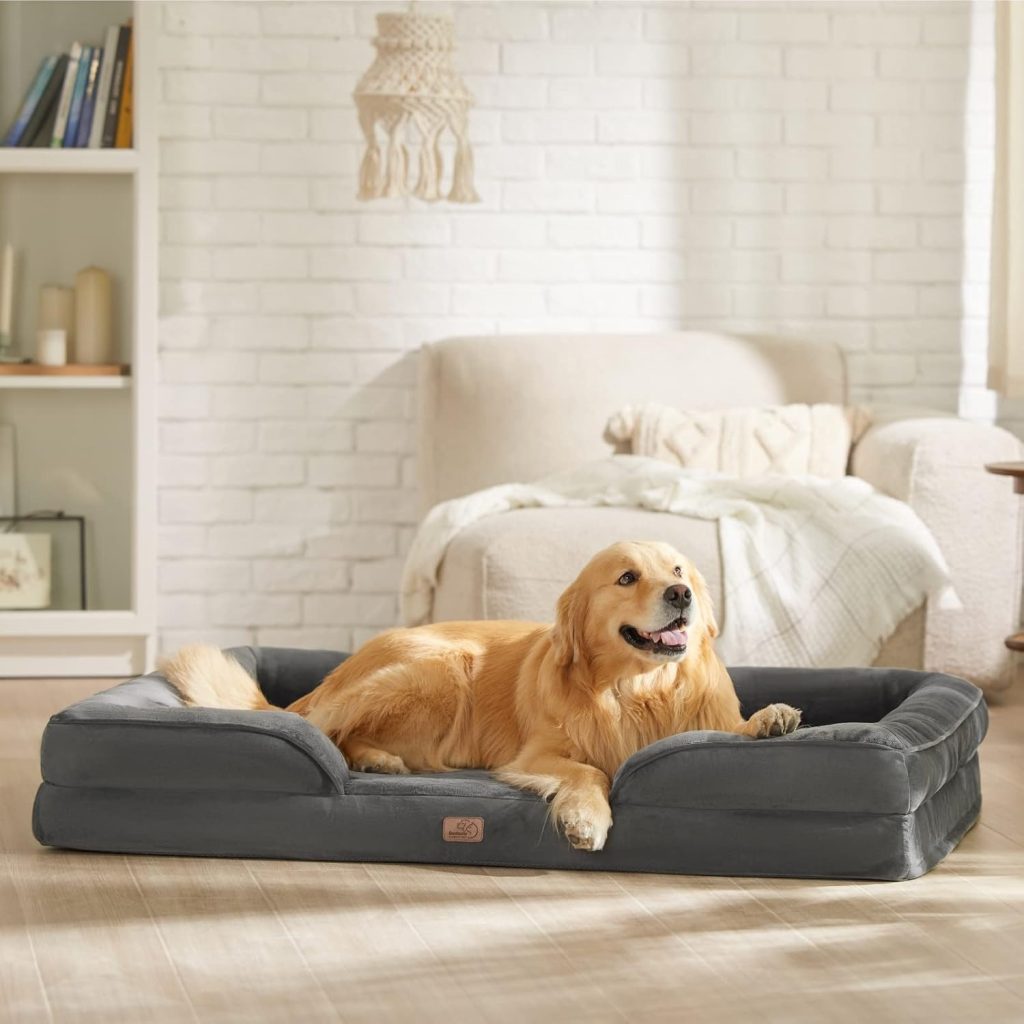
Best Orthopedic Dog Beds by Size & Breed
Choosing the ideal orthopedic bed depends on your dog’s size and breed. Here are top picks for different categories:
Small Dogs (Under 20 lbs)
- MidWest Homes for Pets Soft Sleeper: Compact 2-inch memory foam bed with a waterproof cover. Perfect for Chihuahuas or Yorkies needing cozy support.
- Boo & Co. Organic Memory Foam Bed: Hypoallergenic and lightweight, ideal for sensitive breeds like Shih Tzus.
Medium Dogs (20–50 lbs)
- K&H Pet Products Premium Orthopedic Bed: 3-inch foam depth suits Beagles or Border Collies. Comes in adjustable sizes for growing puppies.
- BarkBox Orthopedic Bed: Cooling gel layer for active breeds like Corgis prone to overheating.
Large Dogs (50–100 lbs)
- BarkBox 4-inch Orthopedic Bed: Dense foam supports Labradors or Boxers, preventing sinking.
- Best Friends by Sheri Premium Orthopedic Bed: Luxe design with reinforced edges for Golden Retrievers or German Shepherds.
Giant Breeds (>100 lbs)
- PetFusion OrthoRest: Extra-thick 5-inch foam bed for Mastiffs or Saint Bernards. Durable cover withstands heavy use.
Breed-Specific Tips:
- Arthritic Breeds: Opt for beds with raised edges (e.g., MidWest ComfortRest) to ease joint strain.
- Water-Lovers: Waterproof beds like K&H Premium are best for Labs or Retrievers.
These beds prioritize breed-specific needs, ensuring comfort without compromising support.
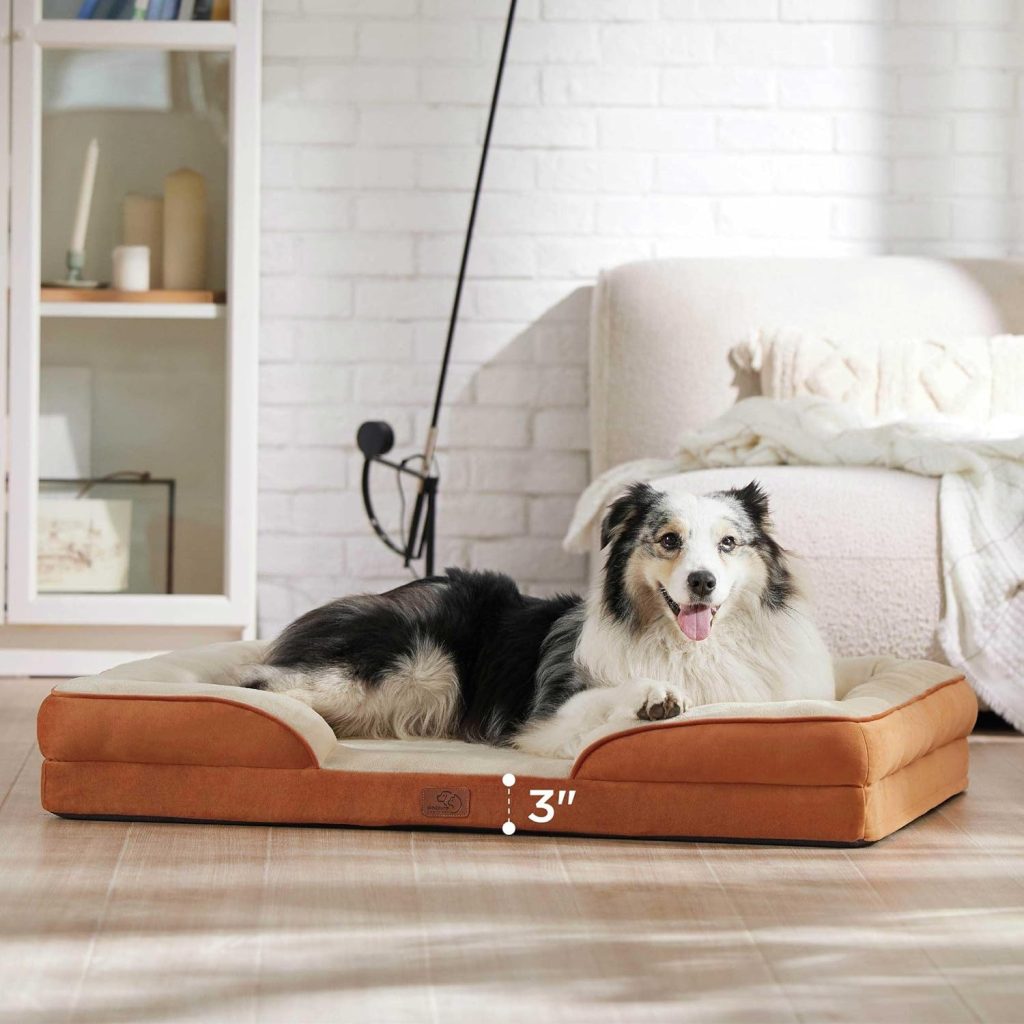
Care & Maintenance Tips
Proper care extends the life of your orthopedic dog bed and maintains its supportive properties:
- Daily Cleaning
- Wipe spills with a damp cloth. Use a pet-safe cleaner (e.g., diluted vinegar) for stains. Avoid bleach, which damages foam.
- Spot Cleaning Covers
- Remove and machine-wash covers (if labeled safe) using cold water and mild detergent. Air-dry to prevent shrinkage.
- Foam Maintenance
- Fluff and rotate the bed monthly to redistribute foam density and prevent flattening.
- Storage
- Store unused beds in a cool, dry place. Stuff with paper to retain shape; avoid folding or stacking.
- Inspect Regularly
- Check for foam compression (if it feels too soft) or cover tears. Replace beds every 1–3 years based on wear.
Avoid:
- Direct sunlight, which weakens foam over time.
- Storing in humid areas to prevent mold growth.
With these steps, your orthopedic dog bed retains its supportive qualities, ensuring lasting comfort for your pet.
Conclusion & Final Recommendations
An orthopedic dog bed is a compassionate investment in your pet’s long-term health and comfort. By reducing joint strain, improving sleep quality, and adapting to breed-specific needs, these beds enhance mobility and extend active years for aging or injured pets. When selecting one, prioritize factors like foam density, waterproofing, and breed compatibility—opting for trusted brands like MidWest, BarkBox, or Boo & Co.
Regular maintenance ensures longevity, while replacing beds every 1–3 years prevents support loss. For seniors or large breeds, prioritize beds with raised edges or extra-thick layers.
Ultimately, an orthopedic dog bed is not a luxury—it’s a necessity for pets facing mobility challenges. By choosing wisely, you ensure your companion enjoys restful sleep, reduced pain, and a higher quality of life. Prioritize their comfort today for a happier, healthier tomorrow.
FAQs
Q: Can orthopedic dog beds help with hip dysplasia?
A: Yes! Memory foam reduces pressure on hip joints, easing pain and improving mobility.
Q: How often should I replace an orthopedic bed?
A: Every 1–3 years, depending on use. Replace if foam flattens or cover tears.
Q: Are orthopedic beds suitable for puppies?
A: Ideal for large-breed puppies to prevent joint strain as they grow.
Q: How do I measure for the right bed size?
A: Add 15% to your dog’s length for comfortable stretching.
Q: Are adjustable beds worth the cost?
A: Yes! They adapt to changing needs.
